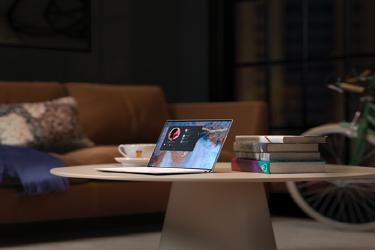
A little while ago, I was feeling overwhelmed for what seemed no apparent reason. I had a lot of projects going on, but nothing out of the ordinary. I had 3-4 projects I was tracking. I was looking at my schedule weekly. Everything should be fine, normally. But then I started to feel the pull of trying new applications. Something was telling me my current setup didn’t work correctly for what I was doing. Usually, I try not to go and chase new “oh shiny” apps, unless I know I need to since something is broken. This time I wanted to let myself do it, in full knowledge of the fact that I was chasing “oh shiny,” and hopefully, I could find what was the pain point that way.
So I tried a bunch of new apps and ways to fix the problem I was having. Then I realized what I wanted out of all of those and what I was trying to achieve. My system had grown from just tasks in some big projects to multiple projects to keep track of their states and completion. That change was mainly from the [5 project rules] and Tiago Forte’s project philosophy he uses in PARA. Those things created a big influx in projects that I had to drive and keep track of, not all at the same time (only 5!) but over the longer term.
Project Manager Mindset
That made me realized I had slowly become more of a project manager. I was juggling projects left and right for both myself and my work, and Todoist is not the best at that task. It’s hard to keep track of the project states and goals and chaining projects together into a bigger one (once you start moving time perspective). I was a bit skeptical and felt like it was overkill at first, why would I need a project manager? But the indications where there and looking around, I’m not the only one in that boat.
A lot of productivity systems out there are when reduced to their most essential points, project management framework. Full heavy project management across teams and companies, with framework and principles and heavy-duty application, is not the only project management out there. That way of doing project management is not suited for me. I don’t have the same needs as a startup or a medium-sized company. So I needed a lightweight project management application that could scale down to my needs.
Project Manager App
After that realization, I switched from trying to find the best “tasks manager” (which is still Todoist in my opinion) to the best “project management” application. That switch did require some relearning and a lot of exploration since those are two very different types of applications. What helped me here is the fact that I already had a working framework, the [5 project rules], I just needed to find something to adapt to that. Starting with already an operational framework or workflow in mind is a crucial point when trying to find a new tool. It’s a lot easier to iterate and discard tools right away when they don’t work. Investing as little time as possible is crucial here since you don’t want to spend a week migrating into a solution only to find out it’s broken for your use.
The application that cut for me was ClickUp. I liked its modularity, and that allowed it to work well with anything I threw at it. But again to reach that point, I tried it step by step:
- Look at the features and pricing on the site. That might seems obvious, but it’s often enough to discard and or qualify an application. Things like the UI and the workflow they present are also a good indicator.
- Migrate 1-2 small projects in the application. You do not want a big investment upfront, but learning with some of your data is very helpful.
- Migrate another 1-2 projects that are active, and you will work on in the coming week. These will help find the holes in the day-to-day use of the application.
- Use the app for a full week to drive those projects. The ultimate test, if you can do that, you most likely have found “the one.”
With each of those steps, take time to sit back and analyze. Some of the applications I tried reached steps two then failed, some reached steps 3, or even four, then broke down. That might look like a lot of time, but it does guarantee an application you will enjoy using, and that will work for you.
Centralization of functions
A surprising effect of this project was to allow me to centralize all my productivity and projects together. Having a dedicated full-featured project manager means I don’t need to track projects across my task manager, my notes, and then in Notion or elsewhere. Everything relating to planning and tasks is centralized in ClickUp, and I know I can easily find it there. That change came with a lot of relief. I didn’t realize the complexity of using multiple apps for driving my productivity before, probably because it evolved until this breaking point.
That idea of centralization for trust and ease is also one of the foundations of Building a Second brain for personal knowledge. But it turns out you can apply it in other areas too. Some people might like more to have multiple applications to all do particular things, but from my experience doing that ends up with a lot more work and overhead. Just as with note application, each productivity application has its quirks and ways of doing things. Switching a lot between those then requires your brain to remember and readjust to those ways of working each time you switch around. To prevent this constant switch is to have a centralized place built for the way you do things, which is where I am now with a project manager.


